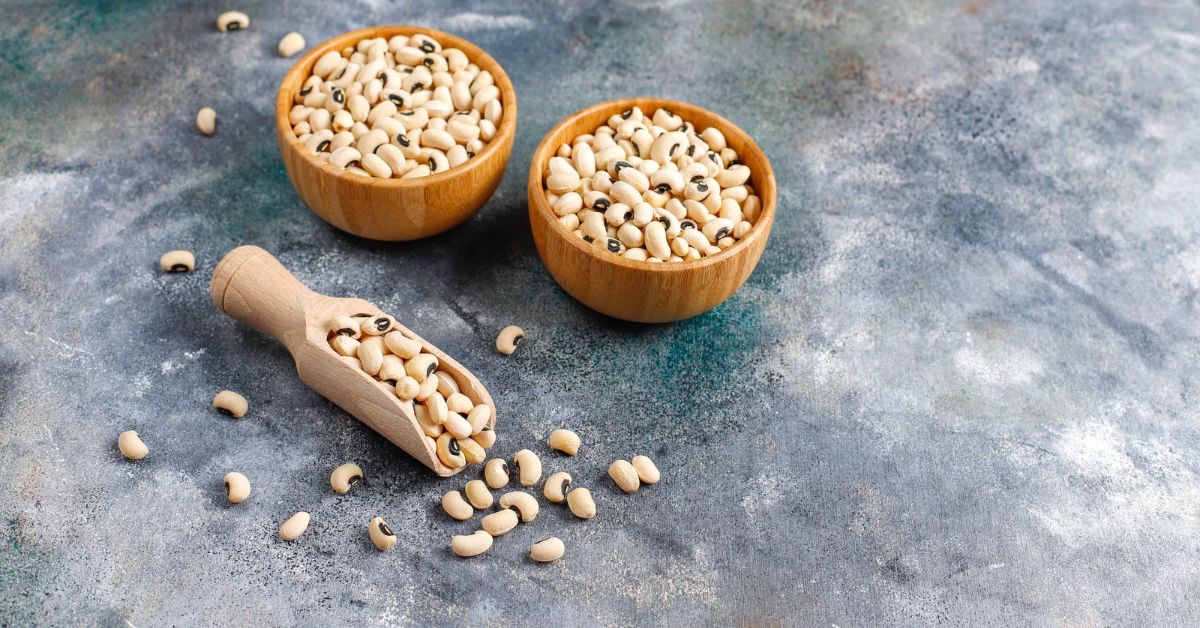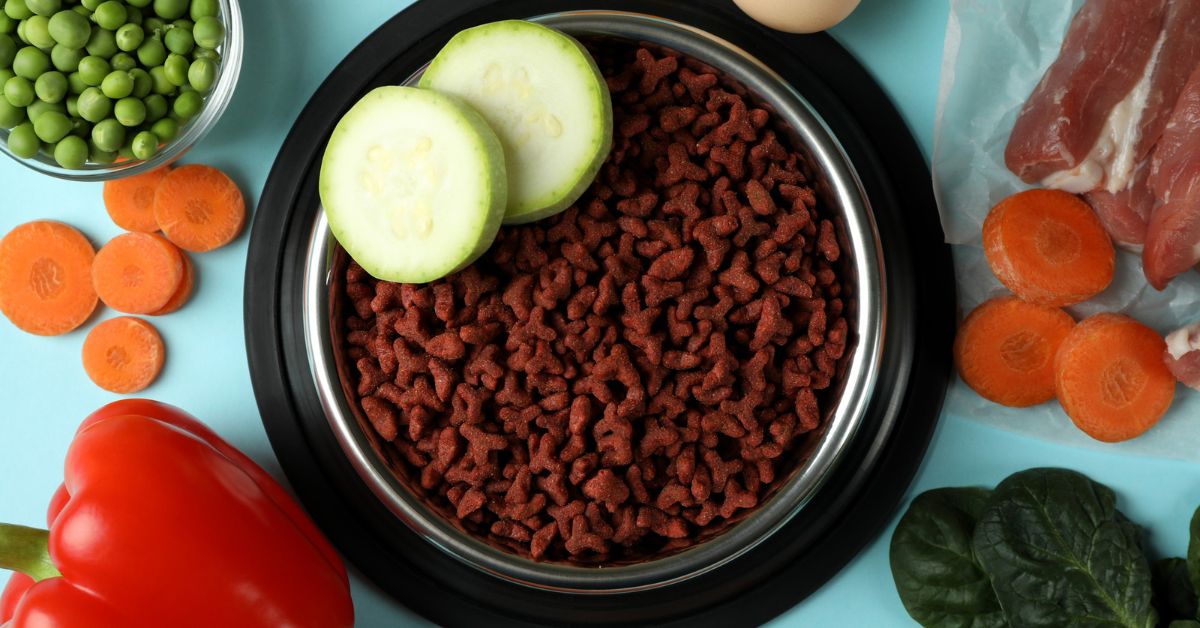A healthy and nutritious diet is a top priority for our furry friends. Dog owners often wonder, can dogs eat black eyed beans? The answer is yes, but understanding its implications and health benefits is key. When prepared correctly, black-eyed beans can also be a healthy addition to your dog’s diet. In this article, we will discuss the benefits and risks of black-eyed beans and how to incorporate them into your pet’s diet. By the end, you’ll know if these beans can be a valuable part of your dog’s diet.
What are Black-Eyed Beans?
Black-eyed beans, also known as black-eyed peas, belong to the legume family. They are small, cream-colored beans with a distinctive black spot. These beans are native to Africa and have become popular worldwide. They are often used in various dishes, including salads, soups, and stews.
In terms of nutrition, black-eyed beans are packed with essential vitamins and minerals. A one-cup serving provides protein, fiber, and a range of nutrients. These beans are an excellent source of folate, iron, and potassium. Their high fiber content can aid digestion and promote gut health.
People enjoy black-eyed beans for their earthy flavor and versatility. If prepared properly, the nutrients found in these beans can also benefit dogs.
Can Dogs Eat Black Eyed Beans?
Yes, dogs can eat black-eyed beans. However, preparation is key to their safety. Raw beans contain harmful toxins that can upset a dog’s stomach. Cooking black-eyed beans thoroughly removes these toxins.
Introduce beans slowly into your dog’s diet to monitor for any adverse reactions. Some dogs may experience allergies or gastrointestinal issues. Look for signs such as vomiting, diarrhea, or excessive gas. If any of these occur, discontinue feeding black-eyed beans immediately.
Always consult with your veterinarian before introducing new foods. Each dog’s dietary needs can vary based on age and health conditions.
Nutritional Benefits for Dogs
Your dog will love black-eyed beans because they’re tasty and packed with nutrients. They provide essential vitamins and minerals that contribute to overall well-being. The beans can offer several health benefits to your furry friend when included in a balanced diet.
- High in Protein: Essential for muscle development and maintaining strong bones.
- Rich in Fiber: Promotes healthy digestion and prevents constipation.
- Feeling of Fullness: The fiber content helps dogs feel full longer, reducing overeating.
- Vitamins A and C: Supports the immune system and overall health.
- Minerals: Contains important minerals like iron and potassium.
- Iron: Helps transport oxygen in the blood.
- Potassium: Regulates heart function and maintains proper fluid balance.
It’s a good idea to serve black-eyed beans on a balanced diet to your dog.
How to Prepare Black-Eyed Beans for Dogs
Preparing black-eyed beans for your dog is a straightforward process. Proper preparation is essential to ensure the beans are safe and healthy for your furry friend. Here are the steps to follow when preparing black-eyed beans for dogs:
- Start with dried or canned black-eyed beans without additives. If using dried beans, soak them overnight in water to reduce cooking time and remove some gas-causing sugars.
- Cook the beans thoroughly by boiling or steaming until they are soft and tender, ensuring they are fully cooked to eliminate harmful toxins.
- Avoid adding salt, spices, or seasonings, as these can be harmful to dogs.
- Consider your dog’s size when serving; a small dog may receive a tablespoon, while larger breeds can have more.
- After the first serving, monitor your dog’s reactions to ensure they tolerate the beans well.
Can Dogs Eat Black Eyed Beans if They Also Consume Sauerkraut?
Many dog owners wonder, “can dogs safely consume sauerkraut,” especially when considering other foods like black eyed beans. While both can be nutritious, moderation is key. Introduce these foods gradually and monitor your dog’s reaction to prevent any digestive issues. Always consult your vet before making dietary changes.
Potential Risks of Feeding Black-Eyed Beans to Dogs
Dogs can benefit from black-eyed beans, but there are potential risks as well. One of the main concerns is the presence of toxins in raw beans. The toxins can cause gastrointestinal upset, vomiting, and diarrhea. Ensure the beans are fully cooked to get rid of these toxins.
Another risk is allergies or food sensitivities. Some dogs may react negatively to new foods, including beans. It’s essential to introduce black-eyed beans gradually and monitor for any adverse reactions. Signs of an allergic reaction may include itching, swelling, or gastrointestinal distress.
Furthermore, black-eyed beans’ high fiber content can cause gas or bloating. This can cause discomfort for your dog and may lead to digestive issues. Always serve beans in moderation to avoid these potential problems.
How to Cook Black Eyed Peas for Dogs
You should soak black-eyed beans overnight and rinse them thoroughly before cooking them. Make sure to cook the beans without adding salt or any seasoning. You can occasionally add a handful of cooked, dried black-eyed beans to your dog’s regular meals. Remember, black-eyed beans shouldn’t replace more species-specific protein sources like meat or fish.
Read More: Can Dogs Eat Papaya?
Conclusion
Ultimately, black-eyed beans can be a healthy addition to your dog’s diet when prepared correctly. They offer various health benefits, including essential vitamins, minerals, and fiber. It’s important to cook them thoroughly and introduce them gradually to avoid any risks. Make sure you talk to your vet before adding new foods to your dog’s diet.




